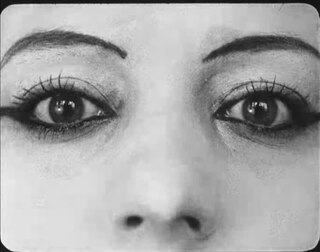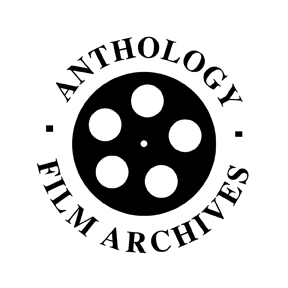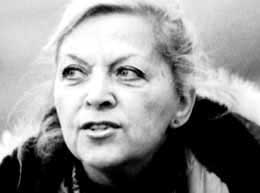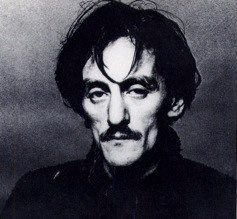Related Research Articles
An underground film is a film that is out of the mainstream either in its style, genre or financing.

Experimental film or avant-garde cinema is a mode of filmmaking that rigorously re-evaluates cinematic conventions and explores non-narrative forms or alternatives to traditional narratives or methods of working. Many experimental films, particularly early ones, relate to arts in other disciplines: painting, dance, literature and poetry, or arise from research and development of new technical resources.

Anthology Film Archives is an international center for the preservation, study, and exhibition of film and video, with a particular focus on independent, experimental, and avant-garde cinema. The film archive and theater is located at 32 Second Avenue on the southeast corner of East 2nd Street, in a New York City historic district in the East Village neighborhood of Manhattan.
Structural film was an avant-garde experimental film movement prominent in the United States in the 1960s. A related movement developed in the United Kingdom in the 1970s.

Wavelength is a 1967 Canadian-American short subject by experimental filmmaker and artist Michael Snow. Considered a landmark of avant-garde cinema, it was filmed over one week in December 1966 and edited in 1967, and is an example of what film theorist P. Adams Sitney describes as "structural film", calling Snow "the dean of structural filmmakers."
Gregory J. Markopoulos was a Greek-American experimental filmmaker.

Zorns Lemma is a 1970 American structural experimental film by Hollis Frampton. Originally starting as a series of photographs, the non-narrative film is structured around a 24-letter classical Latin alphabet. It remains, along with Michael Snow's Wavelength and Tony Conrad's The Flicker, one of the best known examples of structural filmmaking.
Cosmic Ray is a 1962 American experimental short film directed by Bruce Conner. With both found footage and original material, it features images of countdown leader, a nude woman dancing, a Mickey Mouse cartoon, and military exercises. It is soundtracked by a performance of Ray Charles's "What'd I Say" and has been recognized by some critics as one of the first music videos.

Storm de Hirsch (1912–2000) was an American poet and filmmaker. She was a key figure in the New York avant-garde film scene of the 1960s, and one of the founding members of the Film-Makers' Cooperative. Although often overlooked by historians, in recent years she has been recognized as a pioneer of underground cinema.

Robert Carlton Breer was an American experimental filmmaker, painter, and sculptor.

Jerry Jofen (1925–1993) was an American painter, collagist, and experimental filmmaker.
Arnulf Rainer is a 1960 Austrian experimental short film by Peter Kubelka, and one of the earliest flicker films. The film alternates between light or the absence of light and sound or the absence of sound. Since its May 1960 premiere in Vienna, Arnulf Rainer has become known as a fundamental work for structural film. Kubelka released a "negative" version, titled Antiphon, in 2012.
Schwechater is a 1958 experimental short film by Austrian filmmaker Peter Kubelka. It is the second entry in his trilogy of metrical films, between Adebar and Arnulf Rainer.
The End is a 1953 American short film directed by Christopher Maclaine. It tells the stories of six people on the last day of their lives. It premiered at the San Francisco Museum of Modern Art as part of Frank Stauffacher's Art in Cinema series. Though the film met audience disapproval at its premiere, it was praised by critics as a "masterpiece" and "a great work of art".
All My Life is a 1966 American experimental short film directed by Bruce Baillie. It shows a continuous shot of a fence, soundtracked by Ella Fitzgerald's 1936 debut single "All My Life". Film critic P. Adams Sitney identified it as an early example of what he termed structural film.
Anticipation of the Night is a 1958 American avant-garde film directed by Stan Brakhage. It was a breakthrough in the development of the lyrical style Brakhage used in his later films.
Adebar is a 1957 Austrian avant-garde short film directed by Peter Kubelka. It is the first entry in Kubelka's trilogy of metrical films, followed by Schwechater and Arnulf Rainer. Adebar is the first film to be edited entirely according to a mathematical rhythmic strategy.
Blue Moses is a 1962 American experimental film directed by Stan Brakhage, starring Robert Benson.
References
- ↑ Drake, F. Thurston (19 October 2000). "Sitney's Take". The Daily Princetonian . Retrieved 29 June 2013.
After the pleasantries and questions—'When and where were you born?' 'August 9, 1944, New Haven, [Connecticut]'—I tossed out what I thought would be a great question, a real fast ball.
- ↑ Amazon.com: Visionary Film: The American Avant-Garde, 1943-2000, 3rd edition
- ↑ Anthology Film Archives: The First Screenings, 1970|Underground Film Journal
- ↑ Everleth, Mike (3 May 2010). "Anthology Film Archives' Essential Cinema Repertory Collection". Underground Film News. Underground Film Journal. Retrieved 29 June 2013.
- ↑ "P. Adams Sitney".
- ↑ P. Adams Sitney will hold a conference invited by EQZE-Elías Querejeta Zine Eskola
- ↑ Chris, Meigh-Andrews (2006). A history of video art: the development of form and function . Oxford: Berg. ISBN 9781845202194. OCLC 69486182.